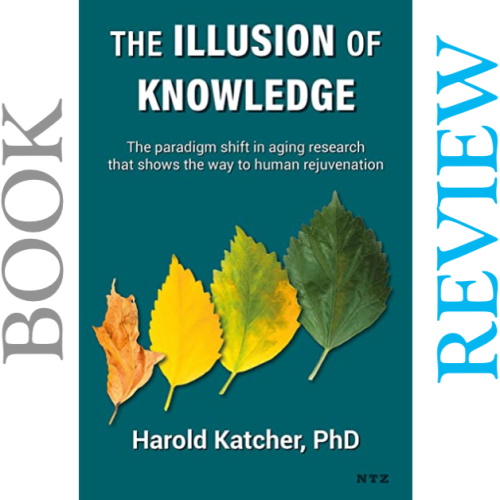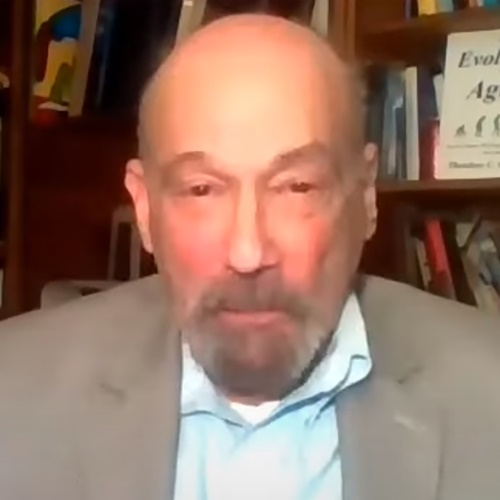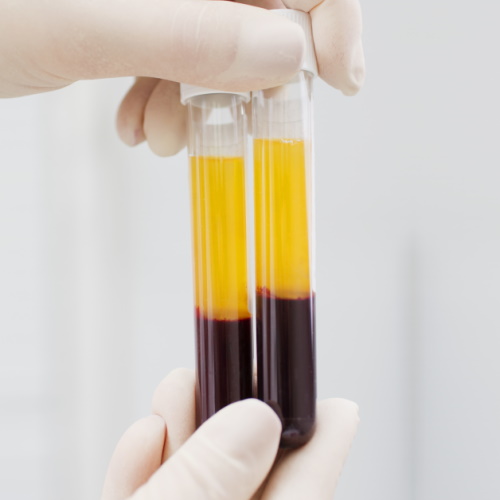The Illusion of Knowledge
By Harold Katcher - the paradigm shift in aging research that shows the way to human rejuvenation
Book Review
This is a passionately written book, giving the history behind Harold Katcher's rejuvenation experiments, that is simple and honest in its telling, but also a bit haphazard in its flow. I almost didn't get past the first chapter as it went into some detail about how different civilisations (Romans, Greeks) and religions (Judaism, Christianity, etc.) perceived death, and how the concept of an immortal post-life is a new concept. Beyond that though, it was interesting to discover how late in the day he decided to look at ageing as something to be cured - even though in his 20s he'd had a dream (maybe a vision) that in 400 years' time people would honour him as the person "who brought immortality to mankind" - wow!
It is generally an interesting read, aimed at a popular science audience, though occasionally he seems to forget this and there are a few paragraphs of heavy biology that I guess he just felt needed to be included. I would definitely recommend.
Key points from The Illusion of Knowledge
Here are the points I highlighted in the text as I went along:
- the hopeless vision of life and death as accepted by most scientists is wrong
- I believe that I have found the solution, or at least the first effective solution to aging
- Survival, not of the individual but of the species, is the measure of success in the biological world
- the discipline of biology only began in the 19th century
- loss of immortality to sexual reproduction was a winning trend in multicellular animals
- the primary determinant of lifespan length is predation; hence the reason that small animals have short lifespans is that they are more susceptible to predation
- De Magalhães wrote after a careful survey of hundreds of mammalian and bird species that “Overall, these results indicate that, independently of body size, developmental time is strongly associated with maximum adult life span.”
- in the African turquoise killifish, their lifespan is closely adjusted to the length of time the pools created during the rainy season remain liquid
- all of life’s energy source is high energy electrons moving from a place of high potential energy to a place of low potential energy
- telomerase functions under reducing conditions, but not in an oxidizing environment
- as the ratio of NAD+/NADH controls Clock-Bmal1 binding, there is a direct connection between the redox state and the circadian clock
- NAD+ is required for deacetylation
- in the fruit fly, Drosophila melanogaster, about two dozen neurons control sleep
- during the latter part of the sleep cycle, the one major purpose appears to be the restoration of cellular redox potential and the repair of oxidative damage
- disruptions of the circadian cycle affect both aging and neural degeneration
- Aubrey de Grey was of the old school — cellular aging resulted from molecular damage and there’s no way young blood plasma could help
- was introduced to the Russian scientist most responsible for the theory of programmed aging, Vladimir Skulachev
- contacted Dobri Kiprov, MD, whose forte was plasma exchange - but he had other ideas, however, and was convinced that serum albumin (the major plasma protein) was the secret to rejuvenation, and was hesitant to use young human plasma.
- even a plasma exchange schedule using a solution of physiological saline and albumin would have been enough to promote tissue rejuvenation as the recent work of the Conboys together with Kiprov proved
- received an e-mail from Akshay Sanghavi, asking whether I would still be interested in doing the experiments I proposed
- my original thinking was that the larger veins on rats would allow us to do plasma exchange more easily
- I wanted to test every aspect of aging, at the biochemical, physiological and cognitive levels
- one indication of aging in all vertebrates is an increase in inflammation
- could get the same effect as with the automated plasma exchange normally done on humans (with a single volume of blood — 30 mL for a rat, 5,000 mL for a human).
- each old experimental animal was given a dose that was a multiple of the amount of E5 that we believed a young animal would have
- truthfully, I didn’t expect it to work, but it was the best I could do
- it was probably a good thing that I didn’t know Big Pharma spent millions trying to track down an E5-equivalent and failed
- all of the more than 30 bio-age markers, from biochemical to higher-level cognition, showed a significant reduction in age
- CpG islands stretches of about 1,000 nucleotides in which the ratio of CpG to GpC is higher than 0.6
- CpG sequences are preferentially found in controlling regions of the DNA
- remains an open question as to whether or not the changes in DNA methylation are the cause of aging or only yet another output of an "aging clock"
- basic theory of Neill is that a predetermined passage through preassigned developmental phases leads to death
- last minute decided to sacrifice two rats of each of the three groups and give the remaining six experimental rats another E5 treatment
- My big fear was that once the body was fooled into believing it was young, it might develop “defenses” (in its suicidal endeavors) against E5
- their DNAm age was actually less than half of their chronological age.
- now incorporated under the name Yuvan Research, producing E5 for third-party validation
- top journals really can’t publish our work until we reveal what E5 is
- by the tenth day the rats over-shot the young group in strength
- the person who loaned us the meter wanted it back, and it was too pricey for us to buy one at the time
- the change in strength undoubtedly occurred before any cell division took place
- now treating rats with E5 “forever”, should they live that long, and seeing if grip strength remains constant in those treated rats
- The continuous and life-long administration of E5 is an experiment generously funded by Didier Cournelle - he bets we cannot exceed maximal lifespan by 50%
- TNF levels go down to their lowest point just four days after the first injection of the second set, and they keep going down to points lower than in the young controls and stays at that level even 60 days (the rat equivalent of five years)
- all vertebrates (terrestrial at least) have increasingly higher levels of inflammation as they (we) age
- chronic inflammation is believed to be the cause of several diseases, including cancer, heart disease and dementia
- age-related changes have no cause other than age
- in our treated animals, all signs of potential liver, kidney, and heart damage were gone
- their latencies were just a bit lower than the old controls, and the experiment ended with the experimental group even closer to the young controls than at their first trials, though no further E5 was given
- the process of rejuvenation seems to take more time to rejuvenate higher functions
- memory and problem-solving return to near youthful levels
- until we have to reveal them (under the protection of patents), our secrets are our biggest asset
- Big Pharma might want E5 gone, as it might considerably curtail business for them
- the age of a cell (or more accurately, the age-phenotype — how it looks and acts) is determined by its intercellular environment, by pro- and anti-aging factors in the blood plasma, and not by how long it’s lived in the body
- cells from centenarians that have been treated with Yamanaka factors - telomeres were lengthened, mitochondria became efficient again as in youth, transcription profiles went back to youthful patterns
- the rise in good cholesterol (HDL) vs. bad cholesterol (LDL) is not a function of lifestyle but of life-stage
- plasma is the body’s way of controlling the age-phenotype of its cells, and E5 returns cells to an earlier epigenetic state
- Dolly the sheep is another example that the nuclei of the cells of mature animals are capable of forming fully functional animals
- somatic cell nuclear transfer showed that even the nucleus of cells aged both in vivo and in vitro could give rise to normal offspring
- did the cytoplasm of the enucleated egg cell have a powerful restorative effect on the aged and apparently senescent nucleus?
- induced pluripotent stem cells (iPSCs) could be made into any cell type desired - they were also set back to age zero
- if cells are transdifferentiated by direct means that by-pass cells going through the iPSC stage, the aging “clock” is not reset
- youth-promoting factors in young blood have a more permanent effect and seem to be dominant over age-promoting factors
- metabolic interventions, in terms of diet or chemicals is not an approach that leads to immortality; at best, in mammals at least, it leads to a fractional increase in lifespan
- if statistics were required, then the effect was insubstantial
- even cells of the same type, that age by the same mechanisms, age at different rates in different organs
- mTOR Complex 1 (mTORC1) has inputs from many aspects of cell function, including energy levels, synthetic activities and growth
- we have some evidence (though not great evidence) that E5 treatment eliminates senescent cells
- senolytics — treatments that eliminate senescent cells — are not a pathway to immortality, though they do have some characteristics of rejuvenation
- it should be possible to keep an animal at a young adult life stage indefinitely, so long as E5 is continually provided
- lifespan is a species characteristic, like size or coloration, that depends on an organism’s ecological niche and habitat as well as many other physical and biological “facts of life”
- “cellular aging” is a myth; the cell’s age is determined by its cellular environment, and not by its history
- in organisms, the flow of time, as evidenced by the passage through their lives, is determined by factors other than mass and density
- to imagine that a biological system would have to obey the laws of entropy as if it were a closed system would be equivalent to saying air-conditioning won’t work because warmth flows to colder areas
- blood plasma (in mammals at least) determines the age-phenotype at the cellular level, which subsequently has been shown to be reversible, and once reversed at the cellular level, those changes will ascend the biological hierarchy, from cells, to tissues, organs, organ systems, and ultimately the whole body to produce a rejuvenated organism
- lifespan is a controlled succession of life-stages - this is not a physical law but a biological one
- lemurs responded to light cycles 2.5 times the frequency by aging at a faster rate
- E5 therapy could be applied at any age, but will be reserved for the aged until supplies exceed demand by that group
- evidence supports Kiprov’s contention that young serum albumin is a pro-youth agent
- nothing as drastic as plasma exchange needs to occur (though it might be useful to speed up rejuvenation)
- we should be able, in the course of several years, to return all our important cells, tissues, organs and organism to youth
- what will be the repercussions of E5 to human society? That’s a question above my pay grade
Publisher Description
In May 2020, the publication of a scientific paper on the rejuvenation of rats shook the foundations of the community that studies the possibility of undoing aging. An average epigenetic rejuvenation of 54% of the animals was reported in the article, in addition to the reversal of dozens of biochemical markers of old rats to values typical of young rats. The main developer of the treatment that led to these results was Dr. Harold Katcher.
The reception of the specialized scientific community to the experiment was shock, with the phrase "it's too good to be true" repeated almost instinctively. Thus, Dr. Katcher decided to write this book, explaining in detail the foundations of his theory of aging and the evolutionary and biochemical bases of the mechanisms that determine the lifespan of different species.
Details last updated 16-Jun-2022
Topics mentioned on this page:
Young Blood





